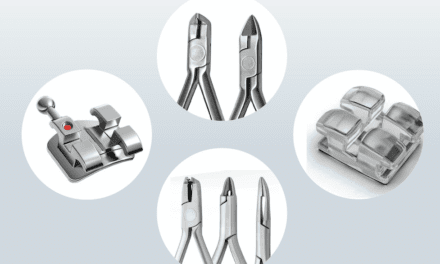with James R. Greer, DMD, MSc

Greer: I began seeing patients with Down Syndrome in my office in similar fashion to any other patient in the office. I have been active with Special Olympics and some parent-support groups, and through these contacts I suppose I have had a few more referrals of patients with mental impairments than the average practice. I approach these patients with a certain measure of extra care, I suppose, but the health practitioner in me sees each individual (even those with Down Syndrome) as really no different than most people—just a different set of problems and challenges.
OP: Do a majority of these patients have the same type of malocclusion?
Greer: Yes. Down Syndrome has easily recognizable facial features and very similar skeletal patterns. These similarities are common across racial, ethnic, and gender boundaries. These common patterns yield similar problems in the dental relationships, though each individual expresses these traits in varying degrees.
OP: What unique treatment challenges do children with Down Syndrome pose?
Greer: Some of the more unique challenges would include significantly delayed dental maturation, microdontia in addition to missing teeth for many, and hypotonic muscular tissues in the entire oropharyngeal area. Macroglossia is also a common oral manifestation of Down Syndrome.
OP: How do you modify your treatment time and mechanics when treating kids with Down Syndrome?
Greer: Treatment timing is delayed, commensurate with the dental development and the physiological maturation of the individual. The overall treatment time is generally not affected greatly, unless the individual has more behavioral concerns, and/or the skeletal malocclusion is more severe. This is pretty much the same as you would find in the general population. As for treatment mechanics, a significant portion of the approach usually involves maxillary expansion and protraction in some manner, and alignment techniques to properly address missing teeth and spacing (microdontia), and to optimize functional occlusion.
OP: What behavioral challenges, both in and out of the office, have you faced with your Down Syndrome patients?
Greer: For the most part, individuals with Down Syndrome are perhaps the sweetest and most loving people you will encounter. Most people with mental impairments have slightly more fear than your average patient and therefore require careful patient management. I generally approach this with more frequent appointments. I thoroughly explain everything more than once, and I show the patient what will happen before it happens. I have found that making the appointments as much a social occasion as a procedure is helpful because it helps the patient (and the parent) to actually look forward to coming to see us. Our younger and older patients alike are always eager to make friends, and we try to do that before worrying about the orthodontic task at hand.
OP: What advice would you offer to an orthodontist who is approached to treat a patient with Down Syndrome?
Greer: The proper approach for patients with Down Syndrome is like that for any other patient with a genetic craniofacial anomaly. The practitioner should be well-versed in the nature of the problem, including systemic concerns, orofacial manifestations of the disorder, and the specific dental characteristics. Down Syndrome was first described as an easily identifiable anomaly in 1866. Thus, there is an enormous amount of information available to the practitioner through the medical and dental literature, through national Down Syndrome associations, and through the Internet. As for treatment mechanics, the skeletal and dental relationships respond to standard mechanics and require no extraordinary manipulation. Some of the more severe problems are being approached with surgical orthodontic techniques, and I suppose even distraction osteogenesis, but I have not had the occasion to try that with my patients.
James R. Greer, DMD, MSc, is in private practice in Lexington, Ky. He is an active member and past president of the Midwest Component of the Angle Society of Orthodontics, and he currently serves on the State Board of Directors for the Kentucky Special Olympics. His 18-year-old daughter, Lindsey, has Down Syndrome. He can be reached at [email protected].










